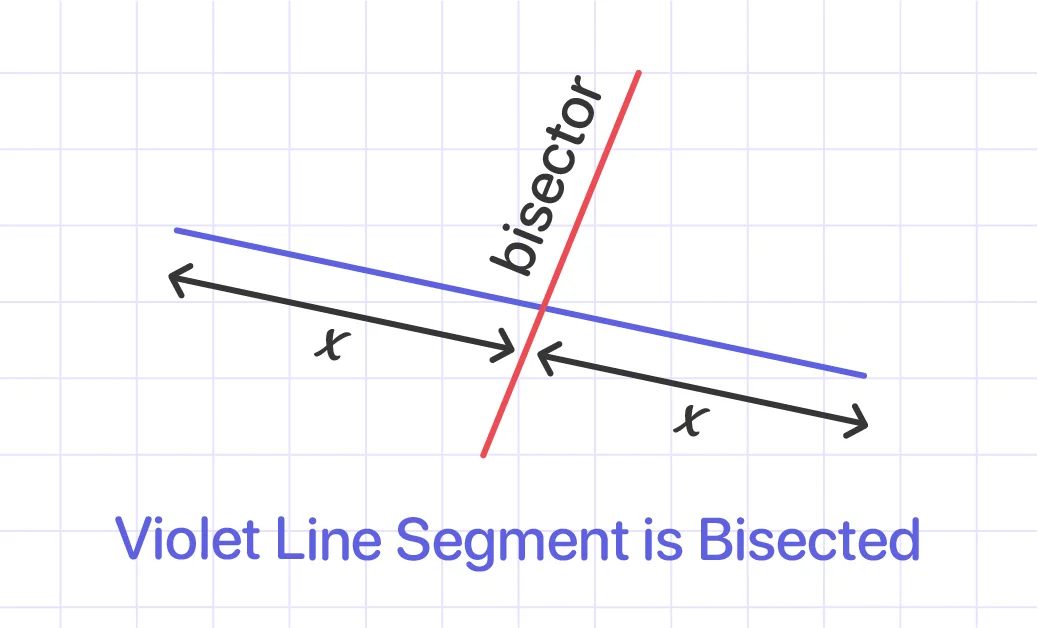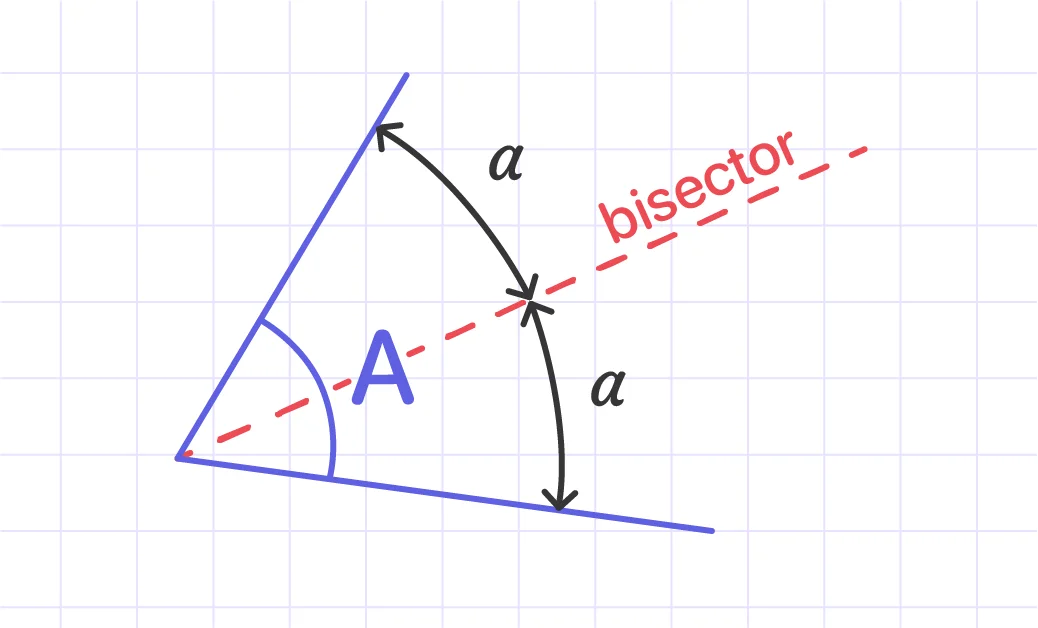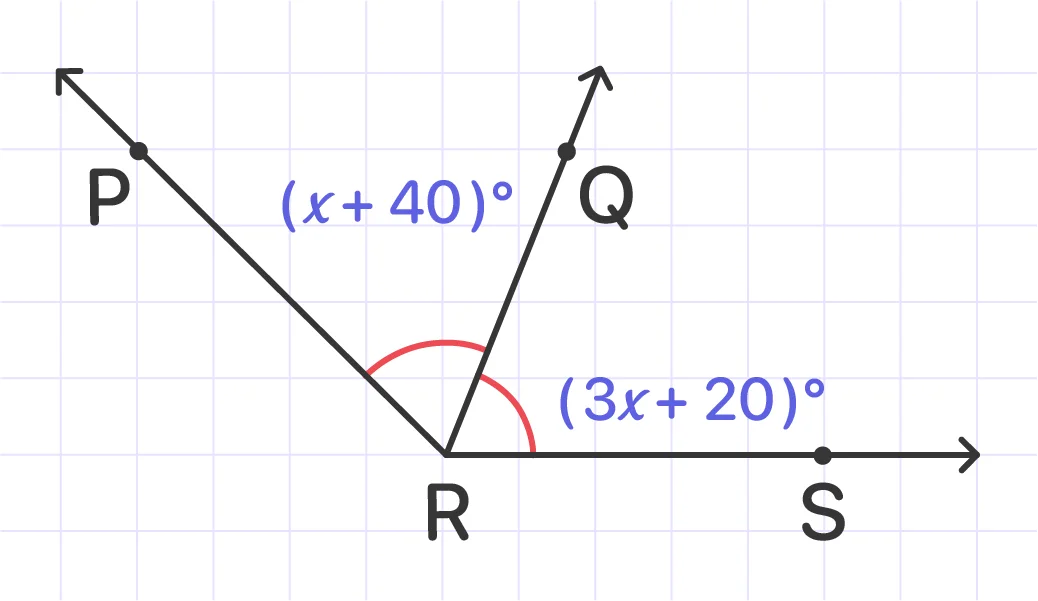MathMaster Blog
The term ‘bisect’ refers to dividing angles/shapes/lines into two equal halves. The dividing line is called the bisector.


Example 1:
Find the value of x, knowing that RQ bisects the angle ∠PRS.

Solution:
Since RQ bisects the angle ∠PRS, ∠PRQ = ∠QRS, therefore, we can solve for x:
x + 40 = 3x - 20
40 + 20 = 3x - x
2x = 60
x = 30
Answer: The value of x is 30.
Example 2:
BD is an angle bisector. Find the measure of ∠ABC.

Solution:
Since BD is an angle bisector, m ∠CBD = m∠ABD
Therefore, m∠CBD = 65°
According to the Angle Addition Postulate, when two or more angles are placed side by side with a shared vertex and a common arm between each pair, the total sum of those angles equals the entire sum of the resulting angle.
Therefore, m∠ABC = m∠ABD + m∠CBD.
Now, we have to substitute:
m∠ABC = 65° + 65° = 130°
Answer: ∠ABC = 130°
Example 3:

RS bisects EF at point P.
If EP = 4x - 3 and PF = 2x + 15, find EF.
Solution:
Since EP = PF,
4x - 3 = 2x + 15
4x = 2x + 18
2x = 18 and x = 9
EP = 4x - 3 = 4(9) - 3 = 36 - 3 = 33
EF = 2(EP) = 2(33) = 66
Answer: EF = 66